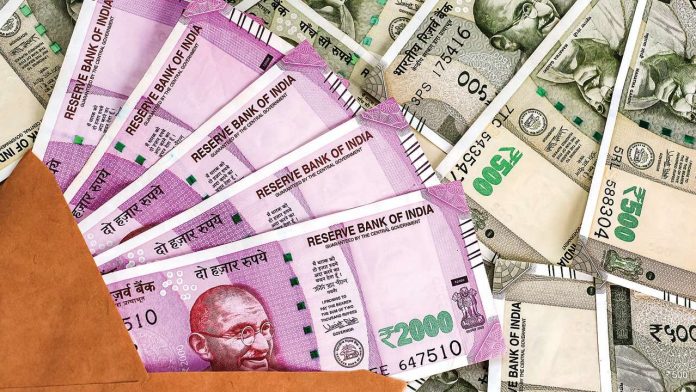This article is written by Surbhi Singh who is pursuing a Diploma in M&A, Institutional Finance, and Investment Laws (PE and VC transactions) from Lawsikho.
Table of Contents
Introduction
There is no single market secret to discover, no single correct way to trade the markets. Those seeking the one true answer to the markets haven’t even gotten as far as asking the right question, let alone getting the right answer -Jack Schwager – (American Trader & Author of Market Wizards)
Jack clearly mentions what is the most misunderstood aspect of trading. Often traders think that there is a certain formula that will yield the most profitable results. Due to the volatility of the market, there are chances that the trader can either gain or lose the money. To be a big player in the market, the trader needs experience and market strategies. Just like shares, there are derivatives that are also traded in stock exchanges. The derivative market has gained momentum since it was introduced in the 2000s. Derivatives are financial security that derives their value from an underlying asset. There are mainly four derivative contracts. One of the contracts is an option. But before investing or trading it is important to understand the basics of securities. Let’s know what exactly the option is.
What is an option?
Options are financial instruments that are derivatives based on the value of underlying securities such as stocks. It is a contract that gives its holder the right but not the obligation to buy or sell an underlying asset at an agreed price within a specified time. The buyer who buys the option (taking a long position) is called the buyer or holder of the option and the party who sells the option (taking a short position) is called the seller or writer of the option.
Types of option
- Call option: The holder has the right but not the obligation to buy an underlying asset at a specified price within a specified time period.
- Put option: The holder has the right but not the obligation to sell an underlying asset at a specified price within a specified time period.
The terminology used in option
- Call- The buyer has the right to buy the stock
- Put- The seller has the right to sell the stock
- Strike Price- The price at which a put or call option can be exercised by the option holder
- Option Price- A price which option buyer pays to the option seller
- Spot Price- Price at which an asset trades in the spot market
- Lot Size- Number of units of an asset in the contract
- Expiration date- Last trading date of the contract
- Open Interest- Options contracts that are currently outstanding in the market
- Option Premium- The price an option buyer pays to the option seller. It consists of intrinsic value and time value.
- Intrinsic Value – It is the difference between the strike price of the option and the spot price of an asset
- Call Option Intrinsic Value = Spot Price – Strike Price
- Put Option Intrinsic Value = Strike Price – Spot Price
- Time Value – an additional amount an investor pays over intrinsic value.
Moneyness of option
The relationship between the spot price of the underlying asset and the strike price is the moneyness of an option. There are three classifications that help the trader to decide which strike to target according to the particular situation in the market. The classifications are as follows:
- In-the-Money option
In a call option, if the current price of the stock is higher than the strike price then the option is said to be in the money. It leads to positive cash flow to the holder.
Spot Price > Strike Price
In a put option, if the current price of the stock is lower than the strike price then the option is said to be in- the- money.
Spot Price < Strike Price
E.g. If the strike price of a call option is Rs 90 and the stock is currently trading at Rs 100 then the option is ITM. If the price goes higher above the strike price, the more ITM the option is and the intrinsic value will be greater.
However in a put option if the strike price is Rs 110 and the stock price is Rs 100 the option is ITM. If the price goes lower than the strike price the more ITM the option will be and the intrinsic value will be greater.
- At the money option
In a call and put option, if the current price of the stock is the same as the strike price then the option is said to be at the money. It leads to zero cash flow as there is no loss and no profit.
Spot Price = Strike Price
E.g. If the strike price is Rs 100 and the current price of the stock is Rs 100 then the option is ATM. Their intrinsic value is also zero.
- Out of the money option
In a call option, if the current price of the stock is lower than the strike price then the option is said to be Out-of-money.
Spot Price < Strike Price
In a put option, if the current stock price is higher than the strike price then the option is said to be out-of-money.
Spot Price > Strike Price
E.g. If the strike price of a call option is Rs 110 and the current price is Rs 100 then the option is OTM. The lower the price goes below Rs 110 the more OTM the option will be
In a put option, if the strike price is Rs 90 and the current price of the underlying stock is Rs 100 the option is OTM. Their intrinsic value is zero.
Let’s simplify this, assume Stock Price to be Rs.100
|
Stock Price |
Strike Price(Call) |
|
|
100 |
90 |
ITM |
|
100 |
100 |
ATM |
|
100 |
110 |
OTM |
|
Stock Price |
Strike Price(Put) |
|
|
100 |
110 |
ITM |
|
100 |
100 |
ATM |
|
100 |
90 |
OTM |
Markets are volatile. Every buyer and seller aims to earn a profit. Profitability depends on your experience and trading strategy. Options can either be ITM, ATM, or OTM. Here we are going to find out what exactly is out of the money option? Out of the money is one of the three types of moneyness of option. Every options trader is familiar with moneyness. Out of the money is highly profitable at the same time risky. As this is a very aggressive options trading method, traders should be experienced enough to use this method.
Why out of the money option?
Traders mostly eye Out the money option as it is relatively cheaper than in the money options. The cost to buy the OTM option is lower than the ITM option as it has no intrinsic value; it becomes a reasonable choice for the trader. If a stock is trading at Rs 100, you can buy an OTM call option with a strike price at Rs 104 if they think that the market will rise above Rs 104. As every trading depends on a market prediction but if prediction goes wrong there are chances that you can face a loss. If you are predicting a quick rise in the stock, a money option would be better. The best to buy an out-of-the-money option is when you expect that there will be an increase in the market volatility.
Expiry of option in out of the money
The option expires when the period of the contract expires. When the call option expires out of the money the buyer loses the commission which he earned while purchasing the option. If you are the seller then you will get the credit you had collected and the stock will remain with you. When the put option expires out of the money the buyer will lose the premium and the seller will earn profit. If the option is OTM the trader has to sell it before the stock reaches the expiration day otherwise the option will be worthless.
Advantages of out of money option
- Acceleration of prices more than ITM or ATM
- When volatility increases all options become ATM
- Less Expensive
- No intrinsic value but has extrinsic value or time value
Disadvantages of out of money option
- As it is aggressive it is suitable for the experienced trader
- It depends on market predictions hence there are chances of loss if the prediction turns out wrong
- Higher risk of loss than ATM And ITM options
Conclusion
It is very important for a trader to have a clear understanding of moneyness for choosing the correct option according to the situation. Moneyness is the term that describes whether an option is in the money, at the money, or out of the money. OTM is preferred by traders as it is cheaper and the risk-reward is good but again it comes down to the preference of the trader. There are certain strategies that can call for ITM options while some may call for OTM options and sometimes both, but it is the trader who has to use options that work best for the given situation. Profits are rewards of the trading done right. There is no particular formula or method for trading. Start from less and then aim for bigger targets.
References
- https://www.investopedia.com/options-basics-tutorial-4583012.
- https://www.wallstreetmojo.com/out-of-the-money/.
- https://www.investopedia.com/terms/o/outofthemoney.asp.
Students of Lawsikho courses regularly produce writing assignments and work on practical exercises as a part of their coursework and develop themselves in real-life practical skills.
LawSikho has created a telegram group for exchanging legal knowledge, referrals, and various opportunities. You can click on this link and join:
 Serato DJ Crack 2025Serato DJ PRO Crack
Serato DJ Crack 2025Serato DJ PRO Crack










 Allow notifications
Allow notifications



